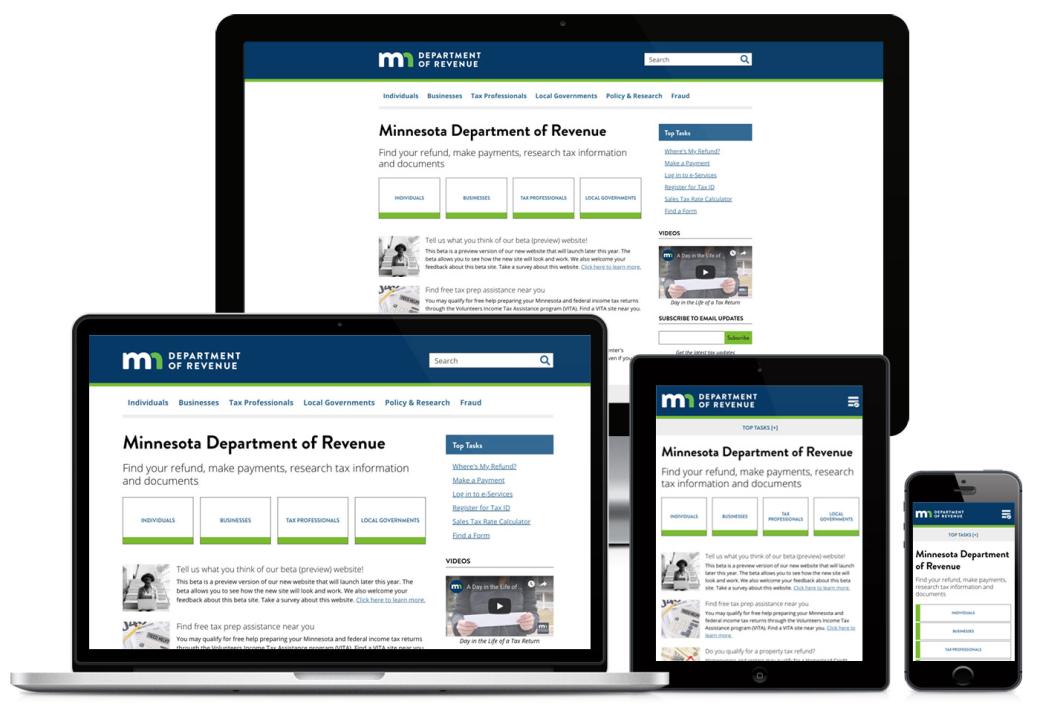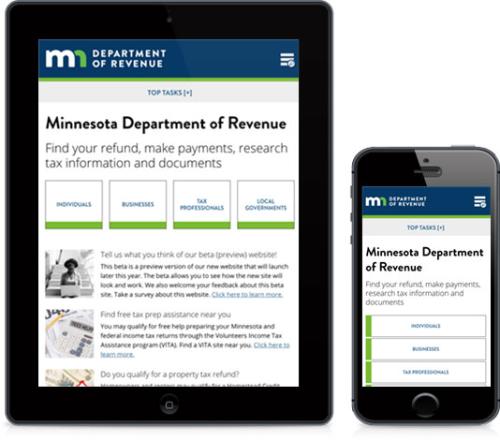State Revenue Department
MN Department of Revenue
The Minnesota Department of Revenue (“Revenue”) manages the state’s revenue system and administers state tax laws. Revenue manages over 30 different taxes and collects over $20.5 billion annually.
The website is an important resource to thousands of Minnesota businesses and residents, needing to understand and comply with state tax laws while keeping up with law and policies.
Even though highly trafficked, the Revenue website was in need of a complete overhaul. The design was ineffective and dated, and did not reflect changes to statewide branding. Web pages were not responsive or mobile friendly. Site navigation was confusing, often redundant and too deep for users to find what they needed. The site did not pass accessibility standards, and content was often difficult to understand.
Electric Citizen, partnering alongside a small team from Acquia, was selected to work with Revenue on the planning, design and development of a new, Drupal 8 powered website.
Revenue had a contract to work with Acquia as their web host and technical consultants, but needed a team of developers and designs to carry out the redesign. After interviewing with both parties, Electric Citizen was selected for our experience in enterprise-scale website redesigns, and expertise in Drupal 8.
Our ability to work alongside both Acquia and Revenue, while offering training and ongoing support to Revenue staff was another key factor. Our agency is active in the Drupal community and dedicated to serving the civic sector, making Electric Citizen a perfect fit for a state agency like the Department of Revenue.
The project began with a series of discovery workshops, held at Revenue offices and led by Acquia. We worked through defining project goals and objectives, key stakeholders, and technical requirements while explaining the agile process and roles and responsibilities.
Content types and taxonomies began to take shape, while mapping how existing content might be managed and migrated out of Sharepoint. We defined fields and metadata required for content within Drupal, and planned how to improve editorial workflow.
Project Challenges
The Department of Revenue website is a critical resource to many state residents, businesses and tax preparers, who expressed concern that any redesign could interrupt their workflow and make content harder to find. Our goal was to provide much needed improvements and upgrades to their website while minimizing interruptions to their core audience.
Another challenge included coordinating our efforts among three groups (Revenue’s team, Acquia’s team and Electric Citizen’s team). We did so by daily scrums, weekly grooming sessions, and extensive conversations between developers, project managers and other team members.
A third challenge was architecting and simplifying a very deep and content-rich website, while migrating thousands of legacy files out of Sharepoint into Drupal 8. Revenue was mostly new to using Drupal, and needed technical consulting on best-practices while helping to train and integrate their own team of developers into the project for future site maintenance.
While migration and site planning was underway, other members of our team began to work on the sitemap and an improved user experience. We conducted a competitive analysis of similar websites, looking for lessons and ideas which we could apply to the new Revenue site.

The nested, tabbed content of the current site was replaced with a series of content accordions and easier-to-scan headlines. An extensive dropdown menu made options easier to locate for end users, while site content itself was pared down and realigned along more consistent audience categories.
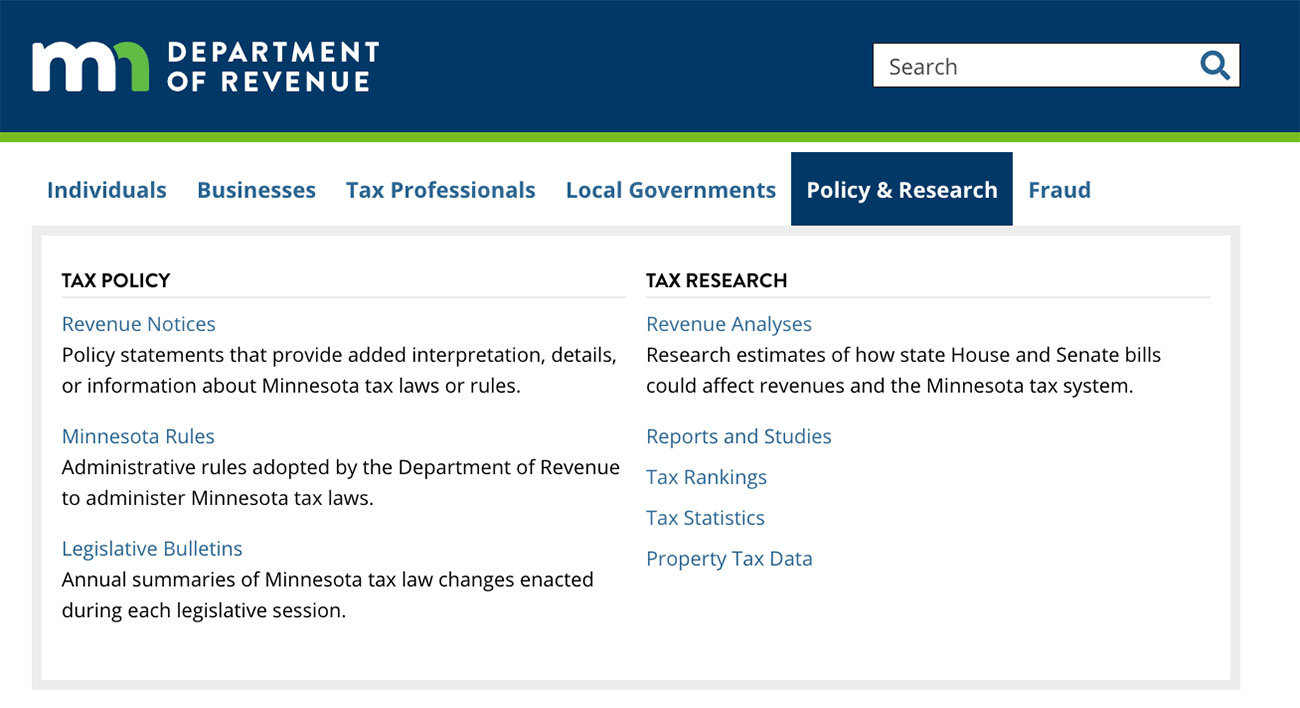
Unnecessary columns in data tables were eliminated while contextual filters were added to make finding data within each table easier. Users have the option of collapsing the sidebar section menu on a page, increasing their overall screen real estate as needed.
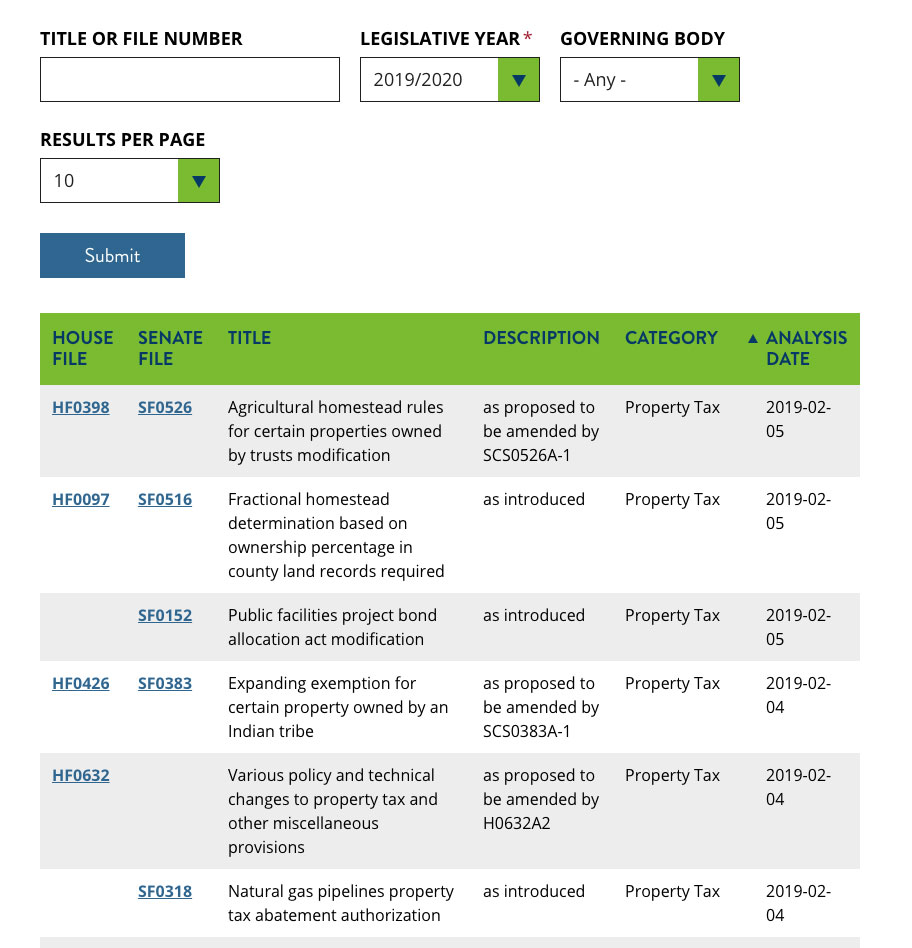
As always, we emphasized plain-language and clarity for end users, making link choices easy to quickly understand and content easier to scan. With improved information architecture in hand, we moved on to design and development.
The design was redone to complement state branding, using preferred colors and fonts while stripping away excess graphics and old stock images that didn’t add anything to the user experience. The overall look is clean, clear and business-like, matching the needs of the target audience.
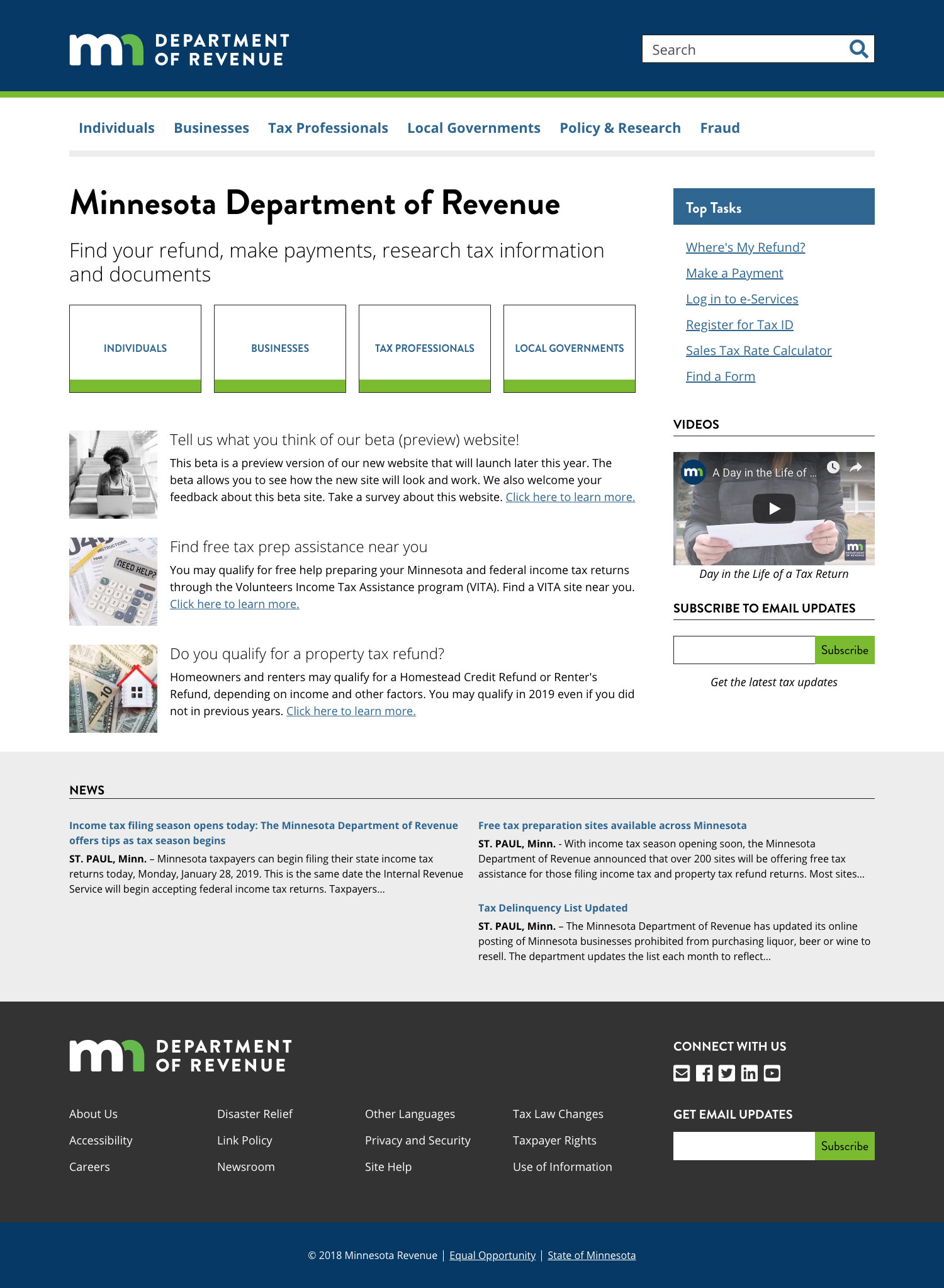
The home page kept the old site’s approach of highlighting the four primary audience groups, but with a simpler series of buttons, and a sidebar callout for the most popular tasks for users. Interior pages were designed to offer a more consistent layout, while making site content more visible, and not buried behind a series of tabs, or deeply nested pages.
Taking direction from the user experience team to reduce content overload, the new design allows site editors to focus each page on the primary messaging, while hiding away some secondary content. For example, the previous site had very lengthy lists of contact numbers on most pages.
The new site presents the most relevant contact information near the top, while hiding less relevant results (street address, hours, etc.) behind accordion buttons. Still available, but without the immediate information overload.
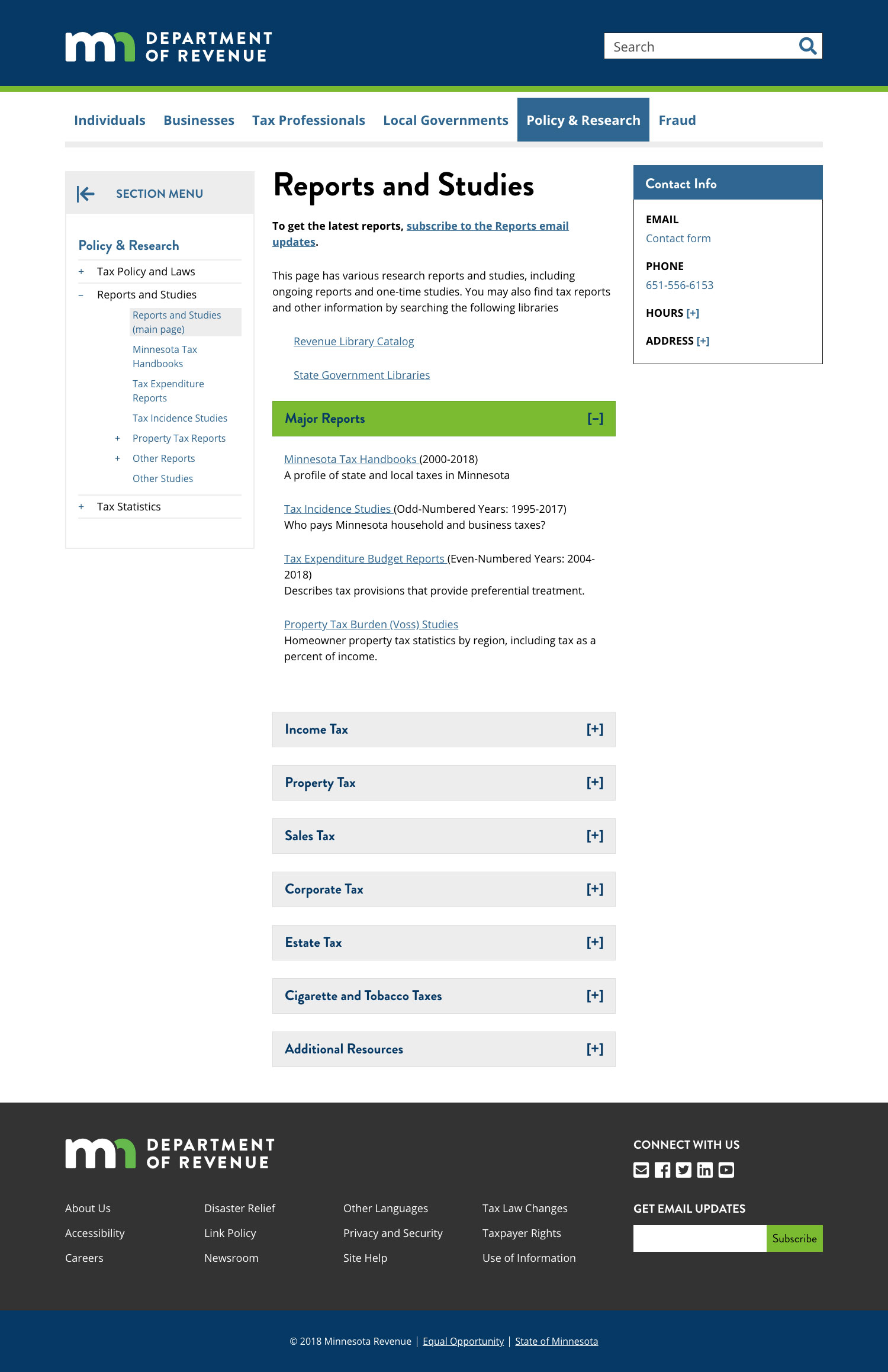
Revenue’s previous site was powered by Sharepoint, where thousands of tax-related documents were hosted and downloaded by site users. As part of the redesign, our team of developers created migration scripts to bring more than 12,000 PDF records dating to 1994 from Sharepoint into Drupal media entities. The full migration included 11 individual source file migrations, 28 total migrations, 36 individual metadata fields, and a possible of 407 field mapping combinations across the different data sets.

This migration required and extensive planning and documentation phase, with each migration mapped directly to the field level in a spreadsheet, along a series of inline notes, flags, and warnings that helped guide the migration.
After successfully migrating all of this historical data into Drupal, all of the files are now fully categorized, filterable and searchable throughout their site using Search API and Apache Solr, and displayed in targeted lists throughout the site as needed.
Phase One of the project ended with our team launching a Beta version of the new site to the general public. Users had the option of opting-in to the new Beta for several months prior to the tax season. It was then hidden away (password-protected) for the busiest season of the year, until the official launch on June 4th, 2019.
Feedback was collected from these early adopters and passed along to the client, where it became part of Phase Two work. Our developers worked with Revenue on incorporating feedback and making any necessary adjustments prior to the official launch.
Initial feedback has been overwhelmingly positive, from the client and the general public. Electric Citizen continues to work and support the Revenue team, and looks forward to ongoing improvements and additions in the future.
